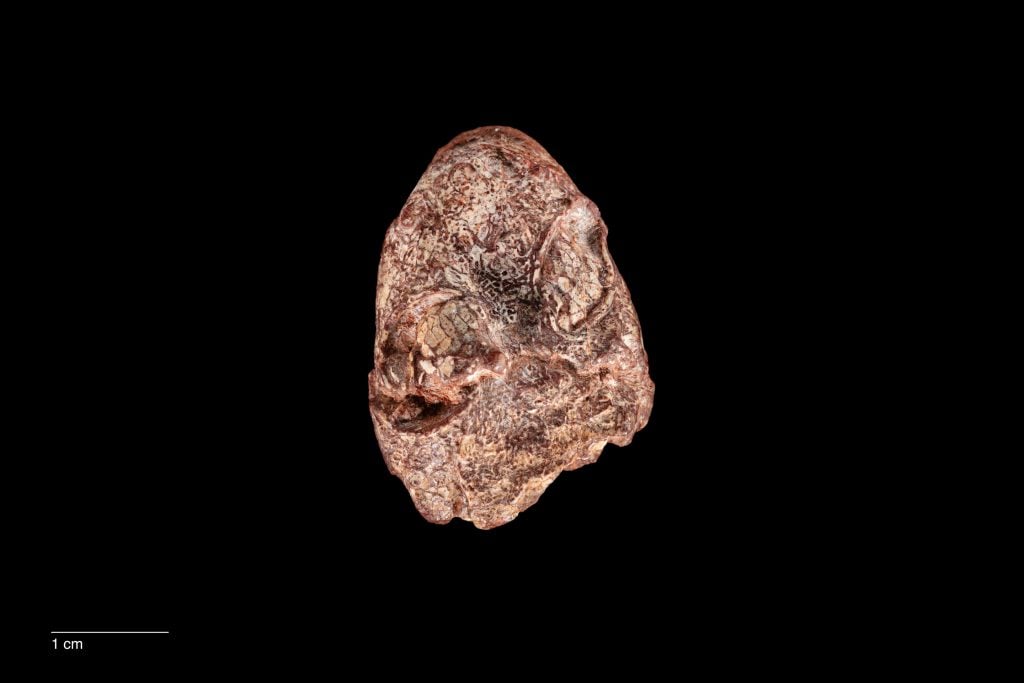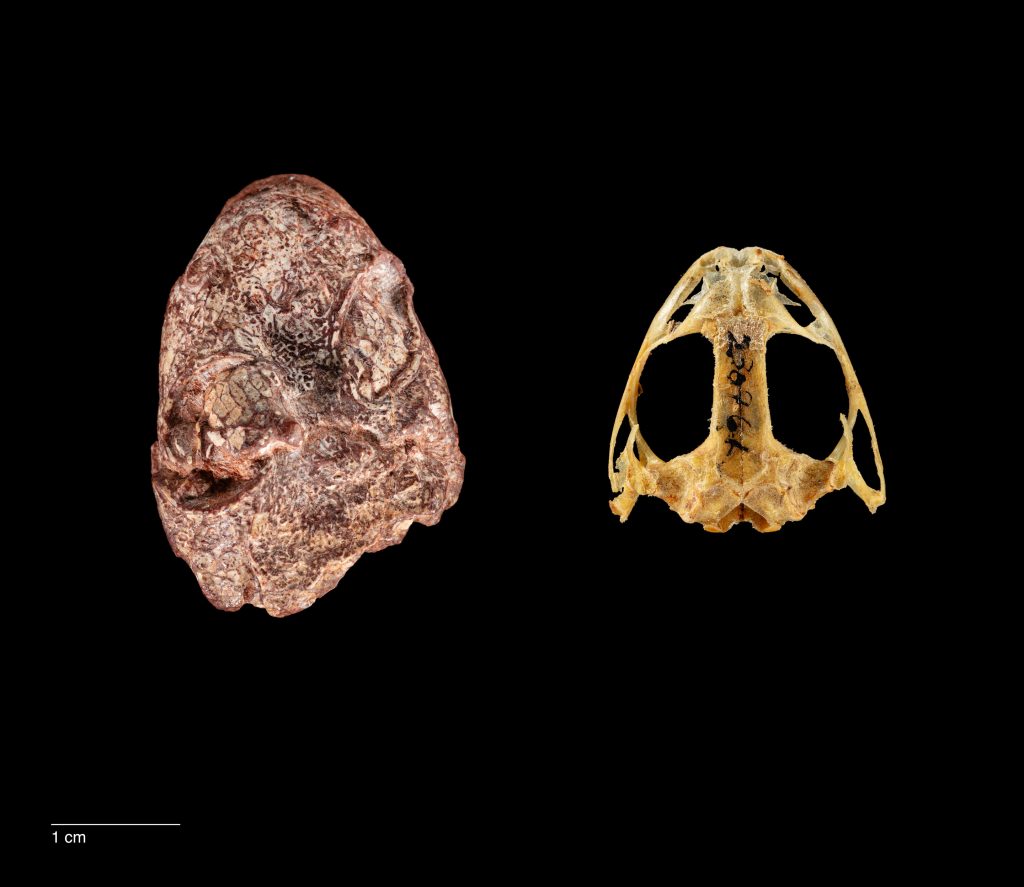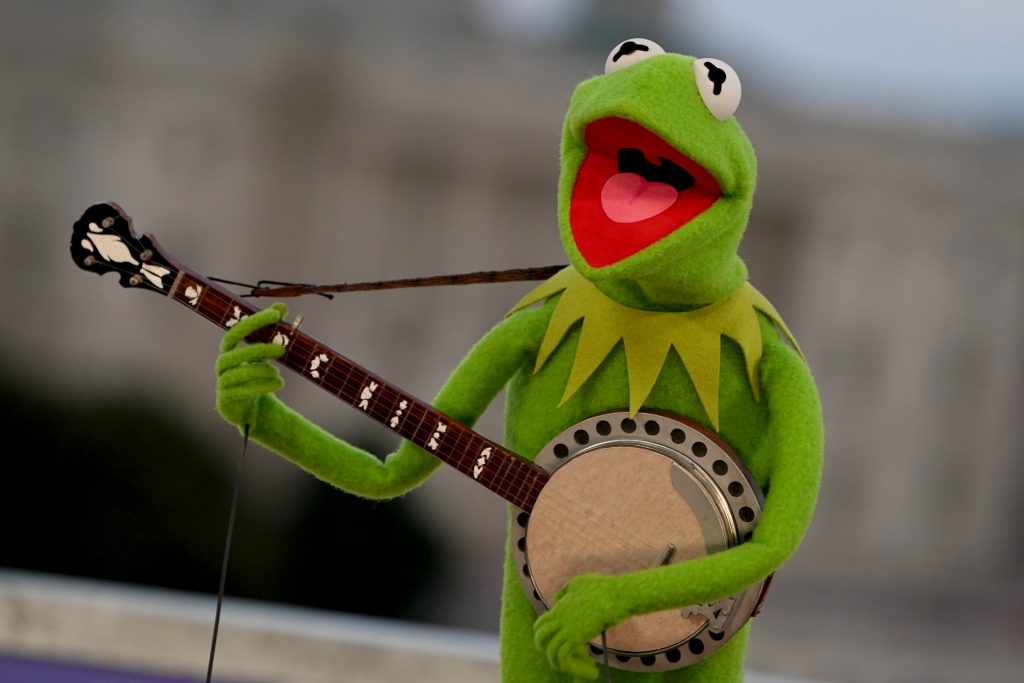Archaeology & History
A New Species of Ancient Amphibian Is Named After Kermit the Frog
The inch-long fossil has been in the collection of the Smithsonian since its discovery in 1984.

A new paper published in the Zoological Journal of the Linenean Society on March 21 describes the discovery of a new species of ancient amphibian named after Kermit the Frog. The name, Kermitops gratus, “has significant implications for how we can bridge the science that is done by paleontologists in museums to the general public, because this animal is a distant relative of today’s amphibians, and Kermit is a modern-day amphibian icon, it was the perfect name for it,” according to one the researchers, Calvin So.
The inch-long fossilized skull of Kermitops gratus has been in the collection of the Smithsonian since being discovered in north central Texas by the paleontologist Nicholas Hotton III in 1984, the same year that the Muppet’s third feature-length film The Muppets Take Manhattan was released by Tri-Star Pictures. Due to the sheer amount of fossils collected by Hotton’s team, not all of them were thoroughly studied at the time of discovery, including Kermitops gratus, which only became the focus of study in 2021 when it was rediscovered by Mann in the collection. George Washington University, where So is a student, regularly collaborates with the Smithsonian, giving students’ access to the world-famous collections.

The fossil skull of Kermitops gratus (left) and that of a modern frog skull (Lithobates palustris, right). Photo: Brittany M. Hance, Smithsonian.
The rocks in the area in which the skull was found, known as the Red Beds, are over 270 million years old, and contain fossils of several ancient species that are early relatives of modern amphibians, reptiles, and mammals. The fossil is a temnospondyl, an ancient amphibian ancestor species, which existed for over 200 million years. Kermitops gratus’s skull features extremely large eye sockets, leading to the association with Kermit the Frog (“ops” being the Greek suffix meaning “face”). “Gratus” references the researchers’ gratitude for Hotton’s original discovery.
The 270 million-year-old animal would have had a curved snout and resembled a salamander, and its discovery is significant for our understanding of the evolution of early amphibians. So said: “Kermitops offers us clues to bridge this huge fossil gap and start to see how frogs and salamanders developed these really specialized traits.”
“Amphibian evolution was believed to be sort of a linear pattern before, but fossils like Kermitops, kind of put a wrench in that by showing maybe this wasn’t as simple as we thought,” So’s colleague Arjan Mann added. “It might have been a process that occurred over many lineages at the same time.”

Kermit the Frog performing in Washington, D.C., 2021. Photo: Jemal Countess/Getty Images for Capital Concerts.
Kermit the Frog was created in 1955 by puppeteer Jim Henson—originally made from an old coat thrown away by his mother—and debuted on Sam and Friends, Henson’s first television puppet sketch show. Kermit later appeared regularly on Sesame Street before becoming the main figure of The Muppet Show from 1974. Kermit is also known for his banjo playing, and his song “Rainbow Connection” reached number 25 on the US Billboard Hot 100 in 1979 after featuring in the Muppets’ first feature film, The Muppet Movie. A star on Hollywood’s Walk of Fame was unveiled for Kermit in 2002.
“I don’t quite see the resemblance, but Miss Piggy and the other Muppets assured me it’s uncanny!” Kermit the Frog said about the discovery in an official statement. “Wait ‘til I tell my family in the swamp about our new great-great-great-great-great aunt or uncle–although we never got any gifts from them, so maybe they’re not that great.”





